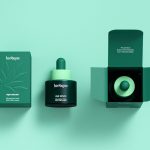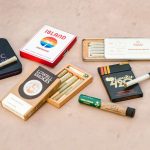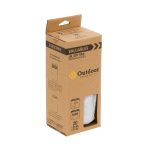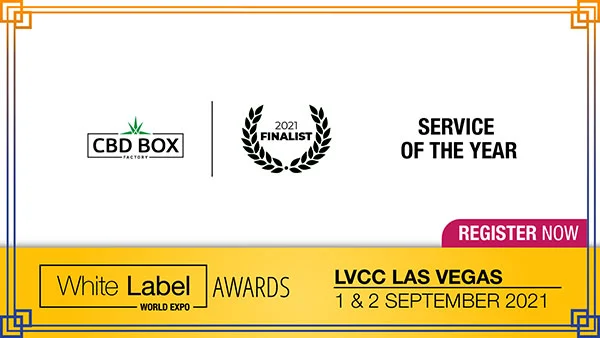Are you an upstart CBD brand hoping to get their product labeling and packaging all figured out?
Or maybe a CBD enthusiast who just needs to know what to look for next time they go shopping?
If you answered yes to either of those questions, then this guide is most definitely for you. In it, we’ll be taking a comprehensive look at everything you need to know about CBD product branding, labeling, and packaging — 16 crucial points in total. Here’s an outline of what you can expect to read about:
Why there’s so much confusion about CBD labeling
4 labeling requirements your CBD brand can’t miss
- Identity
- Net weight
- Full ingredients list
- Name and address of the manufacturer
4 labeling practices your CBD brand shouldn’t miss
- QR codes
- FDA disclaimer
- Contact info
- Product strength
4 of the most common labeling/packaging mistakes
- Information overload
- Stoner stereotypes
- Medical claims
- Low standardization
4 ways to make your CBD packaging stand out
- Outer packaging
- Social proof
- Package inserts
- Killer design
Where to get CBD labels made
The advantage of custom packaging solutions
Extra FAQ’s
Summing things up
Why there’s so much confusion about CBD labeling
“It is the role of federal agencies to ensure a safe and transparent consumer marketplace — but the CBD market is currently the Wild West.”
– Geoff Freeman, President, Grocery Manufacturers Association
The CBD industry finds itself in a tricky place right now.
Why? Largely because of weird timing. The people’s interest (and confidence!) in CBD have far outpaced their actual knowledge of CBD.
This interest has outpaced the government’s ability to regulate CBD, too. A lack of strict CBD labeling requirements has led to all sorts of mislabeled CBD products. Some products are accidentally mislabeled (maybe they don’t indicate their THC content)…other products intentionally push the envelope and try to stand out by making wild health claims. Either way, mislabeled products are running rampant, and that’s led to a whole lot of lawsuits.
Take it from the FDA, who in July sent this report to Congress stating the very same thing.
Testing 200 hemp/CBD products for accuracy, the FDA found that nearly 55% of products contained very different CBD levels than their labels stated — and many products also contained too much THC. For now, testing has been halted (thanks COVID-19), but the FDA plans to carry out more extensive testing in the future.
Consumers are confused about the CBD products they take, too. A survey by the Grocery Manufacturer’s Association found that most Americans taking CBD (76% of them) believe that their products are federally regulated…when in fact no regulations exist!
When informed of this, 82% of these formerly-confident customers became concerned. 67% took things a step further, becoming either “very” or “extremely” concerned.
As a CBD company, your job is to reassure these potential customers. One of the simplest ways to do that? By speaking through your actions, as the old saying goes, with the quality of your custom CBD boxes.
And this type of reassurance can have even more of an impact if you’re a smaller CBD company.
According to the survey above roughly 70% of customers felt more confident buying CBD products from a large, well-known brand — presumably, these brands have better safety controls and higher manufacturing standards.
Keyword being presumably. As a startup CBD company you know this isn’t always the case…and you’re probably eager to show your customers that your products are at least as safe, standardized, and effective.
Without further ado, here are 16 ways you can do that.
4 labeling requirements your CBD brand can’t miss
We’ll start with 4 especially basic labeling requirements that the FDA requires all nutritional supplements to list: identity, net weight, a full ingredients list, and the name/address of the manufacturer. Here’s a closer look.
-
Identity
First and foremost, your CBD product’s label should state what it is: CBD! This info should go on the Product Display Panel (PDP) of each and every product you sell. While products that have both inner and outer CBD packaging (think a label on a bottle and a design on a CBD box)don’t have to list their identity on their inner packaging, better safe than sorry.
Also note that some CBD brands (even large brands) try to stay legally safe by avoiding the word “CBD” entirely, swapping it out for terms like “hemp extract” or “hemp oil” or “hemp aerial parts.”
Our suggestion? Don’t do it! Leaving “CBD” off your labels can be confusing for customers — and depending on how you look at it, it also violates the FDA’s most basic labeling requirement.
-
Net weight
This requirement is also pretty simple: your CBD products should list their net weight clearly on their label. Most 1oz tincture bottles will hold exactly 1oz/30mL of CBD oil, so figuring out net weight is easy. If your product is a liquid, list its net weight by volume; if your product is solid, list its net weight by actual weight.
Where you place this info on a product’s label matters, too. Net weight should be listed on the info panel of your product’s inner container and on the bottom 30% of your product’s outer container if it has one.
-
Full ingredients list
Just like any other nutritional supplement, your CBD product should have all of its ingredients listed clearly. If your product doesn’t have an outer container, this list needs to be placed on the product itself. Place these ingredients on its info panel in the order they occur, like this:
MCT oil, full-spectrum CBD, natural flavorings
Some states have slightly higher requirements for CBD display ingredients lists. New Mexico and Colorado both require that hemp and CBD are clearly identified in a product’s ingredients list. Remember that somewhat shady practice we mentioned in requirement 1 — the trend away from using the term CBD at all? This is one reason why it’s not such a good idea.
-
Name and address of the manufacturer
This labeling requirement is also an intuitive one: your customers should know where their product was made. Include this info on your product’s inner packaging and on its outer packaging…if it has any. In addition to being a legal requirement, listing your brand’s name and address makes you seem personal and accessible, too.
4 labeling practices your CBD brand shouldn’t miss
The following four labeling practices aren’t outright required by law — not in most areas, anyways. But that doesn’t mean you shouldn’t still feature them on your CBD display box! Live up to these standards and show your customers that you’re a CBD brand devoted to doing things right.
-
QR codes
QR codes, for those unfamiliar, are those little square-shaped barcodes you’ve been seeing on a growing number of products. First introduced in 1994 by the automotive industry, QR codes have a nearly endless amount of applications. In this case, they present a great way to pack more info onto your product’s label, without making things overcrowded.
That’s because QR codes can be linked to just about anything. You can link them to your product’s lab test results, batch number, or other valuable info.
In a select few states, QR codes are required on CBD products. Indiana probably has the strictest QR-code mandates; all products need to have them and use them to list expiration dates.
Other potential requirements include:
- the batch identification number;
- the product name;
- the batch date;
- the expiration date, which in some states like Indiana, must be not more than two (2) years from the date of manufacture;
- the batch size;
- the total quantity produced;
- the ingredients used; and
- certificate of analysis.
Here’s our take: include QR codes on your products. Though they aren’t legally required everywhere right now, they probably will be. Why not position yourself ahead of the curve.
-
FDA disclaimer
Some states, like Colorado, require that an FDA-centric disclaimer be listed on CBD product labels. Something like “The FDA has not evaluated this product for safety or efficacy” should suffice. Some brands go a step further, stating that “this product is not intended to diagnose, treat, cure, or prevent any disease.” The choice is yours!
-
Contact info
Your product’s label already lists its manufacturer’s name and address — why not go a step further and provide a phone number or website link, too?
That’s a rhetorical question, of course. Listing sufficient contact info on your product is almost always a good idea. If you’re short on space, just link it to that scannable QR code!
-
Product strength
As covered in the labeling requirement basics, listing your product’s total weight and total CBD content is required by law:
CBD Product | 30ML | 1000 milligrams
This is great and all, but brands that want to do even better can also list their product’s strength/concentration:
CBD Product | 30ML | 1000 milligrams | 33 milligrams per serving
While not a legal requirement, listing dose per serving is more important than you might think. Virtually all other nutraceuticals (vitamin C, vitamin D, whey protein, et cetera) list the contents of a single dose on their front label — not the contents of an entire container! Listing per dose is far simpler and easier for the average consumer. We’d encourage your brand to list both values on its CBD display box.
4 of the most common labeling/packaging mistakes
Next up we’ll be taking a look at 4 things not to do. Avoid these labeling/packaging mistakes at all costs:
-
Information overload
Let’s face it: the average CBD product’s label is tiny, but there’s lots of good info that could (potentially) be listed on it. Some brands attempt to find the best of both worlds by just shrinking their labels’ text smaller and smaller until everything fits.
Don’t do it. Not only does this tactic present too much information, but it also presents information that’s illegible. Reading your product’s CBD display box should be informative…not information overload.
-
Stoner culture-application
Unless your CBD brand is catered specifically to 420 enthusiasts, try not to bring up cannabis too much. The year is 2020, and most people know by now that CBD is not “weed.” Your brand’s persona should be more professional than that — and so should its labels. That means you’re free to skip the cannabis-related imagery and list all of this labeling and packaging stuff we’ve been talking about instead.
-
Medical claims
“Based on the inspection and a review of your product labels and your websites, we have identified serious violations of the Federal Food, Drug, and Cosmetic Act (the Act) and applicable regulation…”
– The FDA, to dozens of CBD companies
As a CBD startup, the above sentence is something you never want to hear. Yet many CBD companies do hear it, via the FDA’s infamous warning letters. Why? Usually, because they made medical claims.
Said letters often go on to say: “…the claims on your company’s product labels and websites establish that your products are drugs under section 201(g)(1) of the Act [21 U.S.C. § 321(g)(1)] because they are intended for use in the diagnosis, cure, mitigation, treatment, or prevention of disease and/or intended to affect the structure or function of the body.”
Long story short, make sure your product labels don’t contain any semblance of medical claims. Don’t describe your latest product as “anxiety-reducing” or say it’s “for chronic pain.” Avoid using any fear-based buzzwords, and stay especially clear of mentioning the coronavirus. The FDA is taking medical claims even more seriously in this COVID-19 era.
-
Low standardization
This point may surprise you, but it’s something we’ve encountered over the years. Some CBD companies have sloppily-applied labels! If you’re a CBD startup that doesn’t have the actual labeling process automatized yet, just be careful. Make sure all your labels are applied evenly across your product packing/bottles. Uneven labels can provide a pretty bad first impression to customers. (To learn more about common packaging mistakes, please click here.)
4 ways to make your CBD packaging stand out
Last but not least, let’s take a look at 4 ways your brand’s packaging can really stand out. With the CBD industry growing increasingly saturated, standing out is really the only viable thing to do! Don’t worry, though — making a statement is easy if your packaging is on point. Here are some ideas.
-
Outer packaging
The outer packaging is by no means legally required, and for obvious reasons, it’s less cost-effective than sticking with inner packaging alone. Still, placing a CBD tincture box
around your product provides several positives. It:
- Gives a professional appearance
- Frees up space to have a clean, minimalist label
- Provides a place to put package inserts/other good info
- Keeps products protected from the elements (cannabinoids and their carrier oils can sometimes be degraded by UV light)
In addition to all that…unboxing a new product is fun! There’s something psychologically gratifying about opening something up for the first time. If you want to wow new customers, don’t neglect the role of custom-printed CBD boxes.
-
Social proof
A brand’s social proof usually comes in the form of their reviews or affiliates or social media following. When it comes to product labeling, however, there’s one big way you can harness it: by getting the support of medical professionals.
If your brand is physician formulated, don’t neglect to mention this on your product labels. You might even ask the doc to provide their signature on each and every bottle!
There are other ways to relay social proof to your customers, too. Just speak to your intended demographic about the things they know best. If your brand is in the luxury market, then your product’s packaging should be all about that luxe feel. In other words, visually cater to your niche!
-
Package inserts
We mentioned these briefly when going over outer packing, but package inserts are important enough to warrant their own little section. A package insert can be anything — given today’s customers have lots of questions about CBD, why not include a little FAQ section or simple dosing guide? Why not include a branded sticker? These little touches can help show your customers that you truly care about them. (To learn more about the impact your design can have on your customers, click here.)
-
Incredible design
“Good design is good business”
– Thomas J. Watson, President of IBM
Good packaging increases neural reward pathways enough to increase the chance of purchase; plain packaging lessens neural activity enough to cause cigarette users to cut back on cigarettes. To use, the implications of this are clear: CBD companies should have the best packaging possible, and cigarette companies should sell their products in plain cardboard boxes! If you need help with your brand’s custom CBD oil boxes, we’re happy to assist.
Where to get CBD labels made
Up until pretty recently, CBD brands had one of two options for getting labels made: work with a slow, cheap, inflexible international packaging company…or with a faster-but-much-more-expensive local one.
Thankfully, times have changed: at CBD box factory we’ve done our best to provide that perfect middle ground. We’re a hybrid company, with printing relationships in the US, Canada, Pakistan & UK, so we can optimize the supply chain based on any client’s needs.
We help new CBD businesses establish themselves in the market by creating beautiful CBD packaging.
We also support existing brands that want to reinvent themselves and adjust to the latest design trends. If you’re looking for Custom CBD oil packaging, you’ve come to the right place. We make the entire design process fast and easy!
The advantage of custom packaging solutions
- Reliability: We’re with you every step of the way. If you make a label sizing mistake, run into legal language issues, or just need some advice, we’ll be there to help you find the right solution.
- Pricing: Our pricing model is highly competitive, highly flexible, and highly convenient. We can print whatever you need — in runs as small as 50-100 copies or as large as 100,000 copies.
- Service: When you work with us, advice, design, distribution, and marketing are all free. We provide free digital proofs and charge very low shipping for sample runs. VIP service is part of our DNA!
- Specialization: More than 100 CBD startups are working with us right now — and new ones are coming in all the time. This experience means we’re aware of all the CBD industries in, outs, and subtleties.
Extra FAQ’s
Still have questions? No problem — we have answers. Check out what other CBD brands are asking below.
What kinds of finishes do you provide?
Because we want your CBD packaging boxes to shine, we offer several high-quality finishes, including gloss, matte, and more. See all our finishes for yourself, or call our team for more information.
Can I see a sample of your materials and finishes before I submit my order?
Yes, we are happy to provide samples! Our standard sample kit includes swatches of our different materials and finishes. We can also provide custom samples printed to your specs. If you need more help deciding just email our team at [email protected].
Can I use stickers on my packaging?
Of course. Labels, seals, and decorative stickers can be used on all our finishes.
What happens if I’m not satisfied with my order?
80% of our customers are return customers — that’s because we go above and beyond to make sure your order is outstanding. In the unlikely event that you experience a problem with your order, however, please email us at [email protected] and we’ll get in touch with you as soon as possible.
Summing things up
Your CBD brand’s labeling can either make or break its image. Its labeling needs to be informative, refined, and — as stated in the first 4 labeling practices we went over — legal. Don’t leave these points to a printing company that doesn’t specialize in CBD!
Instead, entrust your custom CBD packaging to us. We’ll take care of every step of the process so you can focus on what really matters: connecting with your customers and building your business.



















